RAW vs JPEG
May 31, 2021 13:27:46 #
Ysarex
Loc: St. Louis
mgeyelin wrote:
That sounds interesting. How does a raw converter work?
The sensor in your camera responds by converting light energy into electrical voltage. It is not color sensitive. To successfully record color we place a color filter array over the sensor so that each pixel in the sensor receives either red filtered light, green filtered light or blue filtered light. The sensor output is analog voltage which is converted in the camera into numerical values. Those numerical values are all either red filtered, green filtered or blue filtered values. That data is saved and is your raw file.
It takes special software but if you can open a raw file without processing it in any way it'll look like the first illustration below. The inset is an enlargement that let's you see the color filter array. First job is to remove the color filter array and assign the right color to each pixel in the image. This is a mathematical interpolation process we call demosaicing. In the second image below the raw data has been demosaiced and a white point has been assigned that get's us into a normal brightness range. There's still lots to do.
Pause at this point and realize that the camera software has to do all of this in order to create the camera JPEG. ALL DIGITAL IMAGES ARE HEAVILY POST PROCESSED. Either the camera does it or some computer software does it and either you get involved in controlling that or not. The idea that a final JPEG from the camera is somehow less post processed is bunk.
In the third image below two more processing changes have been applied. An input profile for the specific camera has been assigned -- the processing software needs to know about the camera used so that it can apply camera specific adjustments. And the white balance for the photo has been applied. It's looking better but it's flat. Digital camera data is recorded linearly and that means very flat looking photographs. No adjustment for that has been applied yet.
In the fourth image below a tone curve has been applied. This tone curve is the default tone curve generated by the raw converter. This is the image you would see without doing any post processing except to set the white balance. The white balance stored in the raw file is the auto-WB value set by the camera and the camera screwed that up.
The fifth image below is the camera SOOC JPEG in which the camera got the white balance wrong. The camera was set to auto-WB and that big yellow wall tripped it up and it tanked. Using the raw converter in image number 3 I set the white balance manually.
In the final 6th image I used the software supplied by the camera maker (Nikon Z7 and Nikon NX Studio) to re-created the SOOC JPEG but with the auto-WB error corrected. The 6th image is what the camera would have created if I had taken the trouble to set a custom WB at the scene before taking the photo like a good JPEG shooter should.
The processed image #4 from the raw converter has more contrast and increased color saturation compared with the processed JPEG from the camera #6. This is a difference due to the camera input profiles and tone curves applied. The raw conversion software did it differently than the camera. Some folks will prefer one over the other. I would prefer a final result between the two. The camera result is weak and the raw converter result is overdone. Therefore I would want to intervene in either process. I can do that more easily and quickly and successfully using the raw converter rather than editing the camera JPEG.
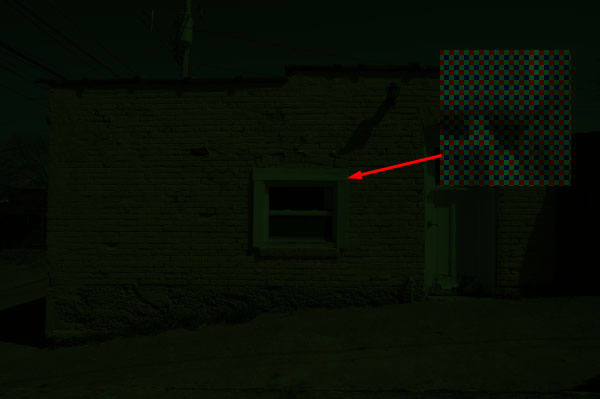

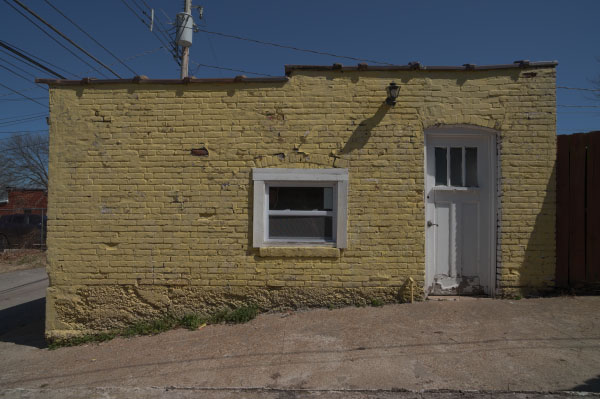
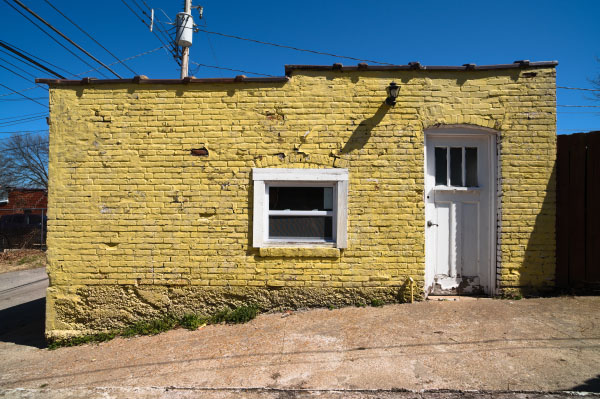
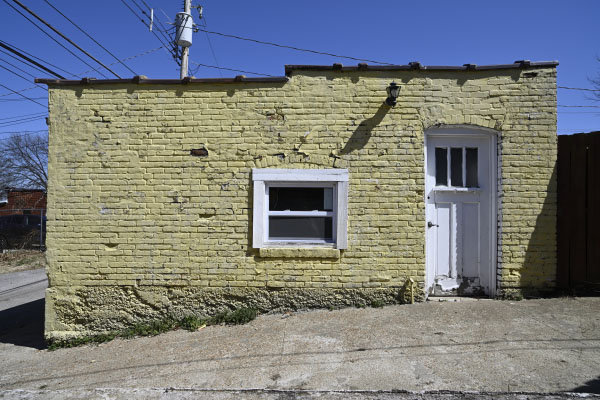
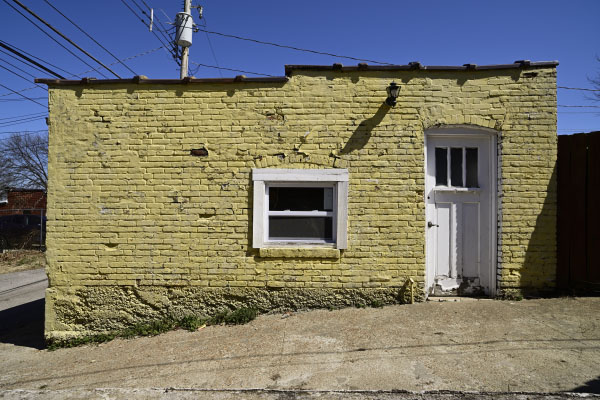
May 31, 2021 15:09:27 #
Ysarex
Loc: St. Louis
mgeyelin wrote:
Thanks for your response. I use Lightroom as my raw converter. Would a Sony converter for an A7Riv give the best JPEG image possible but leave open the option of editing it as a RAW file? That’s worth checking out. First I’ve ever heard of that.
This is worth further comment. First please note BebuLamar's prior comment: "I don't know which camera you use but I use Nikon Df and I shot RAW+JPEG and when I open the NEF (Nikon RAW file) with Nikon NX2 or now Studio NX it looks exactly the same as the JPEG. I can then simply save it as JPEG or I could use the JPEG from the camera they are the same.
Now if for some reason I need to make adjustments the NEF files would allow me to make much better adjustments than I can with the JPEG."
Recent years have seen substantially expanded options available for folks who like the SOOC JPEGs that their camera's create. If you save a raw file you can re-create a new variant of the SOOC JPEG.
In many cases now that can actually be done in the camera itself. Most of my cameras will allow me to reload a raw file on the card and use the camera processing software to re-create the JPEG with changes applied.
In the past Canon has always provided DPP and Nikon has always provided what is now NX Studio that will allow you to use your computer to load a raw file and re-create the camera JPEG with changes to the camera settings. These software apps do the same processing job the camera does and so it's fair to say they can reproduce the camera SOOC JPEG.
I earlier posted a link to Sony's Imaging Edge software for you that does the same.
Fuji now provides software you can load on your computer -- XRaw Studio -- that actually uses the camera processor. You have to cable connect the Fuji camera to the computer via USB and you can see your image on the big screen while the camera will create as many versions of the JPEG as you like with any of the camera parameters changed.
In the case of Fuji's option you can only get what the camera supplies. For a long time DPP was the same and only provided options that were identical to the camera but that's changed now and Canon has been adding additional processing capabilities to DPP.
NX Studio from Nikon is new this year and goes further still with a pretty sophisticated array of shall we say + options that are additional to what the camera supplies. So you can re-create the camera JPEG or take it a step further.
`````````````````````````````````````````````````
The independent raw converters have to either try and backward engineer results similar to what the cameras create (camera makers aren't going to share) or just go their own way and decide what they think is best to default process your image. The big difference with the independent raw converters is that they typically offer a whole lot more in the toolset. It becomes an issue of what tools do you have in your toolbox. If you decide to only use the processing software available in the camera you're selecting the smallest toolset. If you step up to your camera's manufacturer supplied raw conversion software you're adding capability to your toolset and if you move to one of the independent raw processors you're likely adding substantially more to your toolset.
An issue that remains: look at the first sentence in the above paragraph. In processing your photograph with the camera toolset you're getting result selected for you by the camera maker. In using an independent processor you can just be trading one set of engineer's results selected for you with another set of engineer's results selected for you. Is there an option to get results selected by you? This requires an independent raw processor that hands over control to you -- they're still going to have the results selected for you by their engineers option but can you turn them off? After all who's photograph is it?
May 31, 2021 17:20:43 #
I shoot raw only (when available).*
I have a photopile of over 30K images and my memory is aging along with the rest of me. I NEED photo organization to find things. Lightroom is my chosen method. Since I use Lightroom it doesn't cost me anything more to convert a raw file to jpg for use. And in the mostly unlikely case that I screw up some settings, raw files give me more latitude to repair things. It does happen. 100% of my images go into Lightroom. If an image does not go into Lightroom it will be lost within a year.
Since it takes the same effort to put a jpg into Lightroom as it does to put a raw file into Lightroom, I use the raw file.
* There are 3 conditions under which I shoot jpg:
(1) Shots taken with my phone when I don't have my camera with me;
(2) Certain camera modes (e.g. live view high frame rates) produce only jpgs, no raw available;
(3) Taking shots of a featurless surface to look for sensor spots.
I have a photopile of over 30K images and my memory is aging along with the rest of me. I NEED photo organization to find things. Lightroom is my chosen method. Since I use Lightroom it doesn't cost me anything more to convert a raw file to jpg for use. And in the mostly unlikely case that I screw up some settings, raw files give me more latitude to repair things. It does happen. 100% of my images go into Lightroom. If an image does not go into Lightroom it will be lost within a year.
Since it takes the same effort to put a jpg into Lightroom as it does to put a raw file into Lightroom, I use the raw file.
* There are 3 conditions under which I shoot jpg:
(1) Shots taken with my phone when I don't have my camera with me;
(2) Certain camera modes (e.g. live view high frame rates) produce only jpgs, no raw available;
(3) Taking shots of a featurless surface to look for sensor spots.
May 31, 2021 17:35:03 #
larryepage
Loc: North Texas area
Ysarex wrote:
... In processing your photograph with the camera ... (show quote)
I make no claim to be familiar with all camera models, even all Nikon camera models. And this statement may very well be true for Nikon's entry- and consumer-level cameras. But for their cameras with the 'professional' interface and menu system, like the D200, D300/s, D500, D810, and D850, all of which I have owned and used, I do not find it to be true at all.
Those cameras all offer a picture control system with a group of sliders for the same basic parameters controllable in LightRoom or Photoshop. I'm looking at my D500 right now, and it allows me, for each of a number of "Presets" (just like a LightRoom Preset), to individually adjust six parameters: Sharpening, Clarity, Contrast, Brightness, Saturation, and Hue. This is in addition to the standard two-dimensional (blue/yellow, magenta/green) White Balance adjustment, which also offers both quick access settings (also customizable) and direct temperature settings.
May 31, 2021 18:08:59 #
Ysarex
Loc: St. Louis
larryepage wrote:
I make no claim to be familiar with all camera mod... (show quote)
What you describe is common to most cameras at mid-range on up. You're describing the basic camera processing toolset. That toolset is both limited as well as built on a pre-processing foundation you have no control over. That was my point.
If you move to software like Lightroom/Photoshop you'll get more control than you have available in the camera toolset but Adobe's design philosophy is to still withhold some control access because who knows they maybe think they know better than you or don't want to frustrate you with too much choice. So for example you can't process a raw file in LR from many cameras and remove the lens profile corrections if they were included by the manufacturer in the raw file.
Assume you want to use a custom-built input profile for the camera to control color. You can do that with LR, but can you load one into your camera? If not then you're getting results that were selected for you by Nikon's engineers. In creating the SOOC JPEG the camera will apply corrections for lens distortion. Can you turn those off? What if you want to alter the demosaicing algorithm because they don't all produce identical results. LR/PS won't let you do that and certainly the camera won't but there's software that will.
When you're using the camera provided toolset you're limited to what that toolset can provide. All the options to make changes that you noted are available in the D500 are only available to be applied globally. Those same adjustment options in LR/PS are available both globally and locally.
The more flexible and capable the toolset the better chance I have to make my photo mine and the less flexible and capable the toolset the less chance I have to get precisely what I want as opposed to living with something given to me -- that's all I'm saying.
May 31, 2021 18:22:25 #
larryepage
Loc: North Texas area
Ysarex wrote:
What you describe is common to most cameras at mid... (show quote)
No argument with anything you are saying. The newer cameras are less limited in cspability. There was a big step in control after the D300. And tesolution is still limited, but so is my vision. And yes...lens distortion correction can be turned off, if desired.
The point is that controls are available, their capabilities can be learned, and in many cases they are both competent and capable. Just like with post processing software, once I take the time to learn the capabilities, finction, and limitations, I am no longer at the mercy of any engineer anywhere.
May 31, 2021 18:28:59 #
larryepage wrote:
...Those cameras all offer a picture control system with a group of sliders for the same basic parameters controllable in LightRoom or Photoshop...
My cameras have those sliders. However, they are limited to a few steps, whereas a program like Lightroom will have sliders that vary over 100 steps so you have finer control outside the camera.
Also, it probably takes at least 10 seconds to access the slider and adjust it in camera. Will your shot wait? If you shoot raw, you have the sliders you can adjust after the fact, in the comfort of your office, and you can try several different settings on the same shot without having to re-take it.
If you are a photographer that shoots only things that you visualize ahead of time, know exactly what your settings will do, and have the time to set everything up before pressing the shutter, you may be able to live with the in-camera sliders. My photography involves a lot of what that kind of photographer would probably call snapshots. They involve quick reaction.
May 31, 2021 18:38:26 #
larryepage
Loc: North Texas area
DirtFarmer wrote:
My cameras have those sliders. However, they are l... (show quote)
Again...I understand and do not contest what you are saying. In the example I provided earlier at the Terlingua cemetery, you will note that the final image is displayed based in a color temperature of 20,000K. None of my cameras go past 10,000K, so getting it "right" still required additional correction after I took it as far as I could in the camera. I did several other things to that image also (but nothing to the clouds). Nothing in anything I'm saying should be taken as an argument against post processing. I'm not in that camp, although I was a few years ago. But it's not my favorite "thing," and if I can do things to allow me to finish an image in 10 minutes instead of 30, that's my goal.
And yes, I'm well aware that the camera provides 9 steps, not 100. (It used to be 5 or 7.) But I've found those 9 steps to actually be completely sufficient for establishing a good starting point for final processing. And for the things that I would use a JPEG for, it's almost always sufficient...period.
May 31, 2021 18:38:52 #
Other than the WB and maybe choosing a different picture style, there's nothing I'd adjust in my camera on an ad-hoc basis for JPEG shooting. Of course, I'll adjust the exposure parameters, I mean the ad-hoc adjustments to the camera's JPEG processing parameters. The ideas presented above for sharpening, saturation and contrast are intended to be global and always active customizations to the same global and always active picture style settings that come in the camera from the factory.
Even customizing the WB beyond the general Auto / Sun / Shade / etc is a PITA, and really only applicable for controlled studio shooting. If your goal is to skip all post processing, don't even bother with a WB card picture. There are some tools that cover the entire lens opening and you 'pick' that image to set a custom WB in camera. That's about your only effective option if you don't want to use the in-camera options. Those disks won't fit in your pants pocket, so that's another limitation for traveling light and shooting only SOOC JPEG.
And finally: if your goal is to avoid post processing, don't make the mistake of shooting in the Adobe RGB colorspace. Because if you do, you need to mass-update all your JPEGs to sRGB before sharing, kind of 100% opposite of your stated goal.
Even customizing the WB beyond the general Auto / Sun / Shade / etc is a PITA, and really only applicable for controlled studio shooting. If your goal is to skip all post processing, don't even bother with a WB card picture. There are some tools that cover the entire lens opening and you 'pick' that image to set a custom WB in camera. That's about your only effective option if you don't want to use the in-camera options. Those disks won't fit in your pants pocket, so that's another limitation for traveling light and shooting only SOOC JPEG.
And finally: if your goal is to avoid post processing, don't make the mistake of shooting in the Adobe RGB colorspace. Because if you do, you need to mass-update all your JPEGs to sRGB before sharing, kind of 100% opposite of your stated goal.
May 31, 2021 18:45:08 #
Ysarex
Loc: St. Louis
larryepage wrote:
No argument with anything you are saying. The newer cameras are less limited in cspability. There was a big step in control after the D300. And tesolution is still lited, but so is my vision. And yes...lens distortion correction can be turned off, if desired.
The point is that controls are available,
The point is that controls are available,
I never said they weren't. Just above in the post where you quoted me I said: "It becomes an issue of what tools do you have in your toolbox. If you decide to only use the processing software available in the camera you're selecting the smallest toolset. If you step up to your camera's manufacturer supplied raw conversion software you're adding capability to your toolset and if you move to one of the independent raw processors you're likely adding substantially more to your toolset."
larryepage wrote:
their capabilities can be learned, and in many cases they are both competent and capable.
And in many cases they are not capable -- they are often not adequate. I find them inadequate more often than not. What the camera provides is pretty limited and would force me to compromise most of the photos I take.
May 31, 2021 18:53:00 #
larryepage
Loc: North Texas area
CHG_CANON wrote:
Other than the WB and maybe choosing a different p... (show quote)
I agree with you for almost every case. One notable exception, years ago, was at the Fort Worth Zoo in the Nocturnal Reptile exhibit. This photograph was taken under red/infrared incandescent light with a Nikon D200. White Balance was set to 2500K. It's from 2007, during my SOOC days. Nothing else has been done to it. It's not submitted here as a great work of art, just as an example of what judicious pre-processing can accomplish.
May 31, 2021 19:10:27 #
davyboy
Loc: Anoka Mn.
Bill_de wrote:
finally a good common sense responseThere was a time when we were working with 3-5 mb files that this might have been true. Since the sensors and software, have improved by leaps and bounds. While a raw file gives more leeway, a lot can be done editing a jpg.
Banding used to be an issue, but I haven't seen it in any of my images is years.
---
Banding used to be an issue, but I haven't seen it in any of my images is years.
---
May 31, 2021 19:45:49 #
larryepage wrote:
I agree with you for almost every case. One notable exception, years ago, was at the Fort Worth Zoo in the Nocturnal Reptile exhibit. This photograph was taken under red/infrared incandescent light with a Nikon D200. White Balance was set to 2500K. It's from 2007, during my SOOC days. Nothing else has been done to it. It's not submitted here as a great work of art, just as an example of what judicious pre-processing can accomplish.
So, you're shooting digital of a subject that tends to stay rather still for long periods. Are you saying you eye-balled the Kelvin temp, and shot once and came away with this excellent caiman? Do you have auto WB and /or Incandescent WB versions for comparison? Did you put one of the translucent disks over the lens and set a custom WB from the test shot? Did you try other K temps that no longer exist? If this is one takeaway shot, great job, just not my approach to the problem. I never trust the luck of one shot, except now maybe in film.
I agree with the earlier comments, to the extent they apply to RAW digital shooters. That is: do what it takes to minimize the post-processing editing. Recognizing, of course, you're a RAW shooter and process 100% of your images by nature of the format.
There's an argument that shooting 'normal' exposures rather than exaggerated ETTR is less work, but here I differ, as I think you need to maximize the data in the RAW file, and you're going to have to adjust the RAW image anyways. If all your images are always ETTR, no image is more effort than the others in your own standard workflow.
I take as many versions as needed to assure I've 'covered' the subject with a good exposure, sharp focus and a framing that minimizes the cropping and / or cloning of unwanted elements. It's faster to delete 10 than to edit one. If I'm unsure of the artistic effect of aperture, I'll try several versions when time and subject allow. Today, I'm more confident in my personal vision and the unique characteristics of all my lenses, so maybe I have less experimental shots, but I still assure I have one (if not all) that should be in perfect focus. Camera shake and missed / misplaced focus is something you really can fix in post.
May 31, 2021 21:14:30 #
Sidwalkastronomy
Loc: New Jersey Shore
mgeyelin wrote:
I'm beginning to think that PP images is cheating and that you should aim to print what comes out of your camera.
in my b and w darkroom I altered the image by burning and dodging. Is that cheating? I'll tell Adam's that lol
May 31, 2021 21:30:45 #
mgeyelin wrote:
How much can you fine tune a JPEG image vs RAW?
"How much?" is a quantitative question. For this particular situation, there is no simple answer - no one number that is really meaningful.
If you want to reply, then register here. Registration is free and your account is created instantly, so you can post right away.

